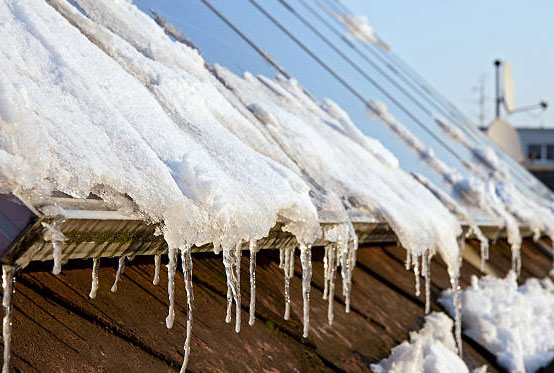
Snow and ice can significantly impact roofs, especially in colder climates. The weight of accumulated snow can strain the roof structure, potentially leading to structural damage or leaks. Ice dams, formed by melting snow refreezing at the roof’s edges, can block proper drainage, causing water to seep under shingles and into the house in Chicago.
To de-ice your roof and mitigate these issues:
Roof Raking: Use a roof rake to remove excess snow buildup, especially after heavy snowfall. This helps prevent excessive weight on the roof.
De-Icing Products: Apply calcium chloride or similar ice-melting products to ice dams carefully. Place the product in a nylon stocking or sock and lay it perpendicular to the roof edge, allowing it to melt a channel through the ice.
Heat Cables: Install heat cables along the roof’s edge to prevent ice dams from forming. These cables help melt snow and ice, maintaining proper drainage.
Professional Assistance: Consider hiring professionals for de-icing if the situation is challenging or if there are concerns about safely accessing the roof.
Insulation and Ventilation: Ensure your attic is properly insulated and ventilated to prevent heat from escaping and causing uneven melting, which contributes to ice dams.
Regular Maintenance: Keep gutters and downspouts clear of debris to facilitate proper water flow and prevent ice buildup.
Always prioritize safety when attempting to de-ice a roof. Avoid using sharp tools or excessive force that could damage the Chicago roof. If the situation seems precarious or unsafe, it’s best to seek professional help. Regular maintenance and proactive measures can help minimize the impact of snow and ice on your roof, preserving its integrity and preventing potential damage.